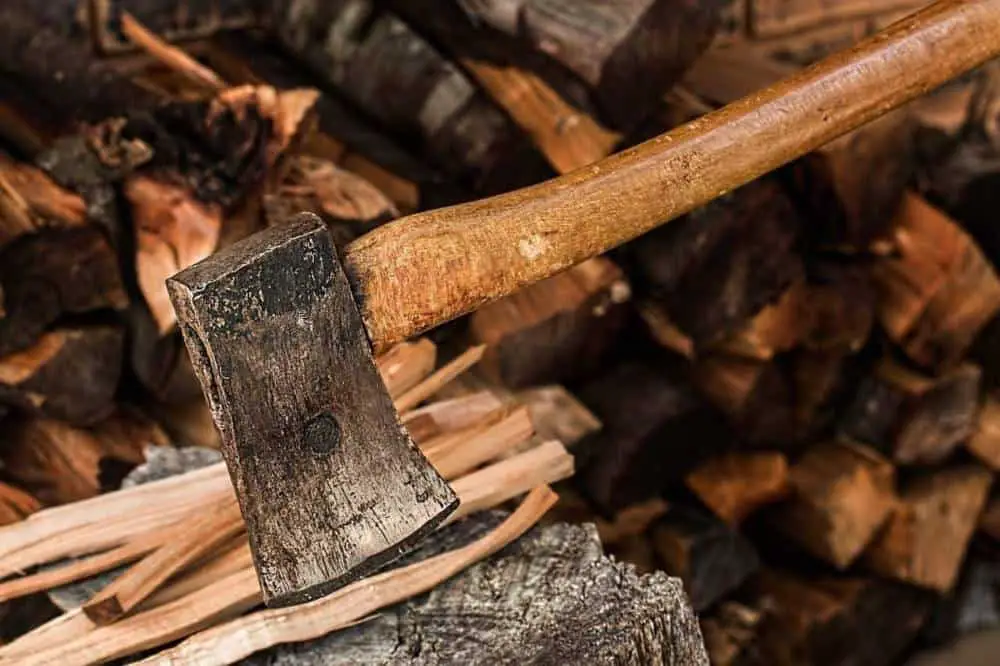
If you’ve heard of a Swedish axe maker, it’s probably one of the 4 below:
- Gransfors Bruk
- Wetterling’s
- Hults Bruk / Hultafors
- Husqvarna
Sweden was once a booming producer of axes. As many as 20 axe forges once operated in Sweden, and at the peak of production, hundreds of thousands of axes were being made in Sweden each year.
Today, there are only a few axe forges left in Sweden, but they’ve carved out a niche in the global axe market, by producing high quality (and higher priced) hand-crafted axes.
There is a clear difference between the axes manufactured by one of these Swedish producers, and the mass produced axes you’d typically find in a local hardware store. If you’re reading this post, you’re probably at least a little interested in the Swedish axe brands, and which one is ultimately the best.
Below, you’ll find a snapshot with some quick details on each Swedish axe maker, along with a video showing one of their axes in action. This should help you make a brand choice, or simply satisfy your curiosity. Enjoy!
Gransfors Bruk – #1 Leading Brand
Snapshot:
- Founding year: 1902
- Location: Gransfors, Sweden
- Notable products: Small Forest Axe, Wildlife Hatchet, Large Splitting Axe *Note: these links go to Amazon, and we receive commissions on Amazon sales at no extra cost to you.
- Fun fact: “Bruk” may have been added to the name, to make the company seem like a bigger operation. In Sweden, “bruk” is historically associated with industry dominant operations, overseen by the royal government.
- Official website: https://www.gransforsbruk.com/en/
History:
There was technically a forge at Gransfors in 1868, which was founded by Johan Pettersson, but it primary produced skythes. Later, in 1902, the company Gransfors Bruk was officially formed by Anders Pettersson (Johan’s brother).
Fast forward to the 1960s and business was booming, and Gransfors Bruk was producing over 200,000 axes/year. But the boom didn’t last forever, and new technology (e.g. chainsaws), increasing competition, and some poor corporate management, led to the bankruptcy of Gransfor Bruk in 1985.
Gransfors Bruk didn’t stay down, and shortly after it’s bankruptcy, it was purchased by the company Svedbro Smide. Then, in the late 80’s Gransfors Bruk made a strategic shift. In a market characterized by fierce competition, and low profit margins, they decided to change their focus to quality above efficiency.
They moved away from mass-production methods, and began to pair traditional craftsmanship with modern design improvements. This has allowed them to carve out a niche in the axe market, for premium (and higher priced) products. The strategy has worked well, and the company continues to grow.
After seeing the success of Gransfors Bruks’ approach, other Swedish axe makers followed in their foot-steps, creating the broader reputation for quality Swedish axes we have today. Gransfors Bruk is the grand-daddy of “Swedish quality” axes, and is the leading Swedish axe maker to this day.
See one in action:
Wetterling’s – Acquired
Snapshot:
- Founding year: 1880
- Location: Storvik, Sweden
- Notable products: Wilderness Axe, Compact Hatchet, Splitting Maul
- Fun fact: In 1889 a single blacksmith could make 20-30 axes/day.
- Official website: http://www.wetterlings.com/
History:
Wetterling’s was founded in 1880 by Sven Wetterling. It remained a family business until 1917, when it was sold to Lilieblad, a competitor in the early Swedish axe market.
The peak of production for Wetterling’s was in the mid-1900s, and they were pumping out over 100,000 axes per year.
With the dawn of the chainsaw, and other more sophisticated equipment, the entire axe market dwindled.
After years of financial struggle, and increasing competition from low-cost manufacturers in China and other emerging economies, Wetterling’s sold to Gabriel Branby (the owner of Gransfors Bruk) in 2007.
See one in action:
Hults Bruk / Hultafors – Runner Up
Snapshot:
- Founding year: 1697
- Location: Aby, Sweden
- Notable products: Hults Bruk Kisa Felling Axe, Hults Bruk Almike Hatchet, Hultafors Classic Hunting Axe *Note: these links go to Amazon, and we receive commissions on Amazon sales at no extra cost to you.
- Fun fact: Hults Bruk is the oldest Swedish forge, that is still used for axes today.
- Official website: http://www.hultafors.com/
History:
Before going any further, something needs to be explained: A Hults Bruk axe and a Hultafors axe, is essentially the same thing. They have different labels, but are produced by the same company, in the same forge, in Aby, Sweden.
The earliest version of the Hults Bruk forge, first began in 1697, and it was owned (but not operated) by nobility until 1820. The location was perfect for early manufacturing, due to it’s proximity to forestland and a flowing river.
The forge primarily produced nails and iron bars in the beginning, and didn’t start making axes until around the 1870s. At that time, Gunnar Ekelund (then owner of Hults Bruk) decided to begin manufacturing axes following American production methods.
During the 1900s, Hults Bruk was affected by the same market trends, including the changes in technology and competition, that have impacted all major Swedish axe makers. Then in 1992, Hults Bruk was acquired by the Hultafors group, creating the company we still have today.
The Hultafors group is also a Swedish firm, and it began in 1883 as a producer of measuring devices.Today, the Hultafors group sells a variety of hand tool products, and Hults Bruk produces their axes under both brand names.
See one in action:
Husqvarna – Budget Swedish Axe
Snapshot:
- Founding year: 1689
- Location: Huskvarna, Sweden
- Notable products: Large Wooden Splitting Axe, Carpenter’s Axe, Wooden Hatchet *Note: these links go to Amazon, and we receive commissions on Amazon sales at no extra cost to you.
- Fun fact: Husqvarna chainsaws are affectionately called “Huskies”
- Official website: https://www.husqvarna.com/us/
History:
If you’ve ever heard of Husqvarna, you may be surprised to see them on this list. They are best known as a manufacturer of chainsaws, and other outdoor power tools.
Husqvarna first began in 1689 as a government-owned rifle manufacturer. They have a long, and storied history, but let’s skip to the axes. If you want to learn about the history of Husqvarna axes, and where they are made, simply refer to the snapshot on Wetterling’s and Hults Bruk above.
Husqvarna axes are produced by the above Swedish manufacturers on behalf of Husqvarna. In order to offer some savings against the premium prices of Gransfors Bruk and Hultafors, Husqvarna makes a few changes.
For example, if you order a Husqvarna axe and a Gransfors Bruk axe, you’ll probably notice the following differences:
- A Husqvarna axe is less polished
- A Husqvarna axe will arrive less sharp
- A Husqvarna handle may be a cheaper material or cut
- The label is different
These (mostly aesthetic) differences, make up a fairly significant price difference between the two. If you’re looking for a Swedish quality axe, and you don’t mind sharpening the axe after it arrives, then Husqvarna provides a good budget option.
See one in action:
Wrap-up
There you have it, everything you need to know about Swedish axe makers.
I hope you’ve found this helpful, and if you’re interested in learning more about homesteading, different types of firewood, or cutting logs with a chainsaw. Check out our blog!
Also, if you know someone else who might be interested in learning about Swedish axe makers, please share the link to this post with them. Cheers!
